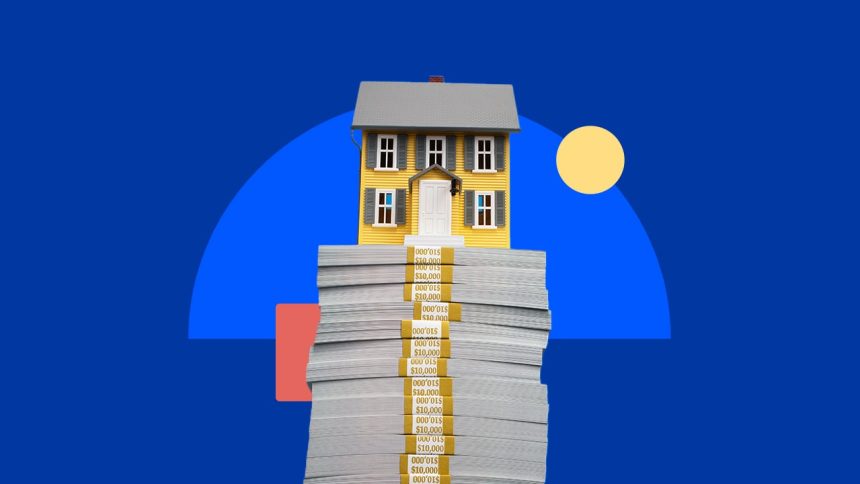Image by PM Images/Getty Images; Illustration by Hunter Newton/Bankrate
Current mortgage rates
| Loan type | Current | 4 weeks ago | One year ago | 52-week average | 52-week low |
|---|---|---|---|---|---|
| 30-year | 7.00% | 7.11% | 6.66% | 7.09% | 6.32% |
| 15-year | 6.35% | 6.49% | 5.99% | 6.45% | 5.68% |
| 30-year jumbo | 7.00% | 7.03% | 6.35% | 6.96% | 6.13% |
The 30-year fixed mortgages in this week’s survey had an average total of 0.29 discount and origination points. Discount points are a way for you to reduce your mortgage rate, while origination points are fees a lender charges to create, review and process your loan.
Monthly mortgage payment at today’s rates
$2,018
Monthly mortgage payment as of March 13
The national median family income for 2023 was $96,300, according to the U.S. Department of Housing and Urban Development, and the median price of an existing home sold in January 2024 was $379,100, according to the National Association of Realtors (NAR). Based on a 20 percent down payment and a 7 percent mortgage rate, the monthly payment of $2,018 amounts to 25 percent of the typical family’s monthly income.
Will mortgage rates go down?
“Inflation isn’t settling down as quickly as was expected so this will keep a floor under mortgage rates until we get some better data,” says Greg McBride, CFA, Bankrate’s chief financial analyst.
Back in October, the average rate on 30-year home loans topped 8 percent. Rates crossed back under 7 percent in December after the Federal Reserve announced it’d pivot to cuts in 2024. The central bank left rates unchanged in January — and the latest inflation numbers make it less likely that the central bank will cut rates at its March meeting.
To be clear, mortgage rates are not set directly by the Fed, but by investor appetite, particularly for 10-year Treasury bonds, the leading indicator for fixed mortgage prices. That can lead to intense rate swings — they soar on news of Fed hikes, then plummet in anticipation of a cut.
Mortgage rates are also chained to inflation, a metric the Fed has been moving to control.
Loan applications rose 7.1 percent this week, according to the Mortgage Bankers Association, while home prices remain elevated. While NAR reported an uptick in inventory in January, many markets still don’t have enough listings.
“While home sales remain sizably lower than a couple of years ago, January’s monthly gain is the start of more supply and demand,” said Lawrence Yun, NAR chief economist.
-
The Bankrate.com national survey of large lenders is conducted weekly. To conduct the National Average survey, Bankrate obtains rate information from the 10 largest banks and thrifts in 10 large U.S. markets. In the Bankrate.com national survey, our Market Analysis team gathers rates and/or yields on banking deposits, loans and mortgages. We’ve conducted this survey in the same manner for more than 30 years, and because it’s consistently done the way it is, it gives an accurate national apples-to-apples comparison. Our rates differ from other national surveys, in particular Freddie Mac’s weekly published rates. Each week Freddie Mac surveys lenders on the rates and points based on first-lien prime conventional conforming home purchase mortgages with a loan-to-value of 80 percent. “Lenders surveyed each week are a mix of lender types — thrifts, credit unions, commercial banks and mortgage lending companies — is roughly proportional to the level of mortgage business that each type commands nationwide,” according to Freddie Mac.
Read the full article here














